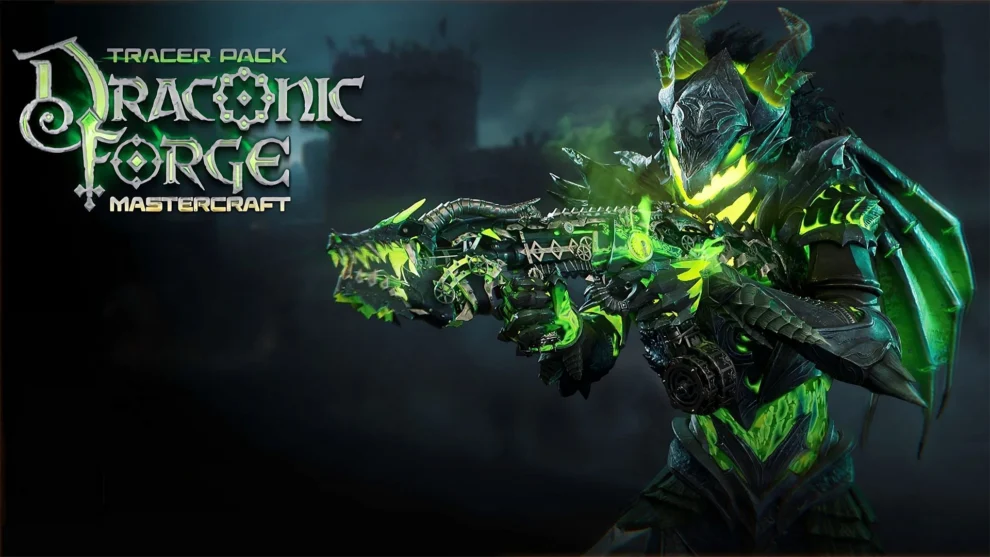A wave of mockery has flooded the Call of Duty: Black Ops 6 community following the release of the “Dragon Knight” skin for the Operator Westpoint. Players are criticizing the skin’s over-the-top design, arguing it clashes with the game’s traditionally grounded aesthetic.
The “Dragon Knight” skin, part of the Draconic Forge Mastercraft Tracer Pack, has become the center of a heated debate about the balance between realism and creative expression in Call of Duty.
While some players appreciate the opportunity to personalize their characters with unique and eye-catching skins, others feel that the recent trend towards outlandish cosmetics is detrimental to the game’s identity.
This isn’t the first time Call of Duty players have voiced their concerns about unrealistic skins. However, the “Dragon Knight” seems to have struck a nerve due to its particularly flamboyant design. The skin features Westpoint clad in elaborate armor with glowing red accents, a horned helmet, and a dragon-shaped shoulder pad.
Many players have taken to social media and online forums to express their amusement and disapproval, with some comparing the skin to something out of Fortnite, a game known for its cartoonish and whimsical aesthetics.
“It’s like they’re trying to turn Black Ops into a fantasy RPG,” one Reddit user commented. Another player joked, “I’m waiting for the unicorn and rainbow skins to drop next.”
The controversy surrounding the “Dragon Knight” skin raises important questions about the future of Call of Duty’s visual style. While the franchise has historically strived for a sense of realism, recent installments have shown a willingness to experiment with more stylized content. This shift has been met with mixed reactions from the community, with some embracing the change and others longing for the grittier aesthetics of older titles.
A Clash of Aesthetics: Realism vs. Creative Expression
The heart of the “Dragon Knight” controversy lies in the tension between two competing desires: the desire for realism and the desire for creative expression.
On one hand, many players are drawn to Call of Duty because of its immersive and authentic portrayal of modern warfare. They appreciate the attention to detail in the weapons, environments, and character designs, which contribute to a sense of realism and believability. For these players, outlandish skins like the “Dragon Knight” shatter the illusion and disrupt the immersive experience.
On the other hand, there are players who enjoy the opportunity to express their individuality and personalize their characters with unique and eye-catching skins. They see the “Dragon Knight” and similar cosmetics as a fun and harmless way to add some personality to the game. For these players, the pursuit of realism should not come at the expense of creative freedom.
The debate between realism and creative expression is not new to the gaming industry. Many games grapple with the challenge of balancing these two elements, often with varying degrees of success. In the case of Call of Duty, the franchise has traditionally leaned towards realism, but the recent influx of outlandish skins suggests a potential shift in this direction.
The “Fortnite-ification” of Call of Duty?
One of the most common criticisms leveled against the “Dragon Knight” skin is that it resembles something out of Fortnite. This comparison is often used to express disapproval, implying that Call of Duty is abandoning its roots and embracing a more cartoonish and whimsical aesthetic.
While the comparison to Fortnite may be hyperbolic, it does highlight a growing trend in the gaming industry towards more stylized and fantastical content. This trend is driven by a number of factors, including the increasing popularity of esports and the desire to appeal to a wider audience.
As esports continue to grow in popularity, game developers are increasingly looking for ways to make their games more visually appealing and spectator-friendly. This often leads to the introduction of more colorful and outlandish skins, which can help players stand out from the crowd and create a more exciting viewing experience for fans.
Furthermore, the gaming industry is constantly seeking to expand its reach and attract new players. This means catering to a wider range of tastes and preferences, which may include players who are more receptive to stylized and fantastical content.
Whether or not the “Dragon Knight” skin is a sign of the “Fortnite-ification” of Call of Duty remains to be seen. However, it is clear that the franchise is not immune to the trends shaping the gaming industry. As the lines between different genres continue to blur, it is likely that we will see more experimentation with visual styles and aesthetics in future Call of Duty titles.
The Impact on Gameplay and Community
While the controversy surrounding the “Dragon Knight” skin primarily revolves around aesthetics, there are also concerns about its potential impact on gameplay and community dynamics.
Some players worry that the increasing prevalence of outlandish skins could lead to a pay-to-win scenario, where players who are willing to spend more money on cosmetics have an advantage in the game. This could create an uneven playing field and discourage players who are unable or unwilling to purchase these skins.
Furthermore, the introduction of highly visible and distracting skins could potentially disrupt the flow of gameplay and make it more difficult for players to focus on their objectives. This could be particularly problematic in competitive game modes, where even the slightest distraction could mean the difference between victory and defeat.
Finally, the controversy surrounding the “Dragon Knight” skin has exposed a growing divide within the Call of Duty community. While some players embrace the change and welcome the opportunity to express their individuality, others feel alienated and lament the loss of the franchise’s traditional aesthetic. This divide could potentially lead to a fracturing of the community, with players self-segregating based on their preferred visual style.
Looking Ahead: The Future of Call of Duty Aesthetics
The “Dragon Knight” controversy serves as a reminder that the gaming industry is constantly evolving and that player preferences are not always aligned. As Call of Duty continues to grow and adapt to the changing landscape of the gaming world, it is inevitable that there will be further experimentation with visual styles and aesthetics.
It is important for developers to strike a balance between catering to the desires of different player segments while maintaining the core identity of the franchise. This means listening to feedback from the community and carefully considering the potential impact of new content on gameplay and community dynamics.
Ultimately, the future of Call of Duty aesthetics will be shaped by a combination of factors, including player preferences, industry trends, and the creative vision of the developers. Whether the franchise continues to lean towards realism or embraces a more stylized approach, it is crucial that the developers prioritize creating a fun and engaging experience for all players.










Add Comment